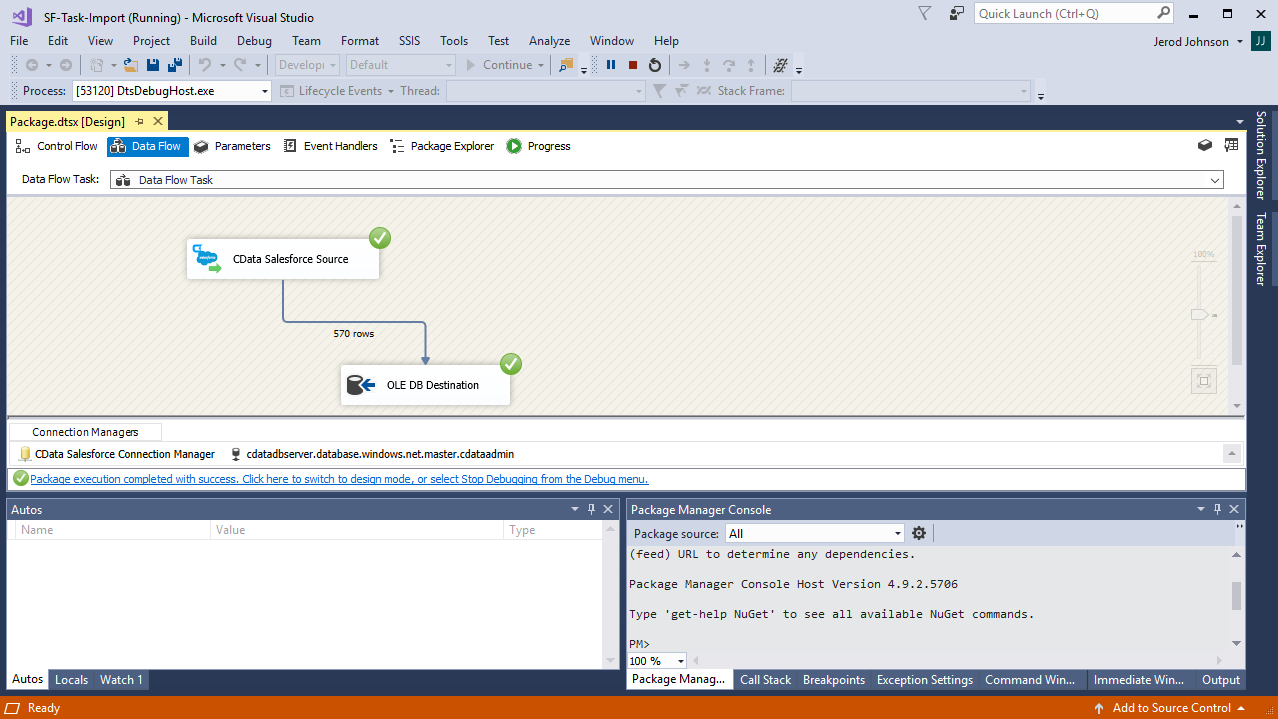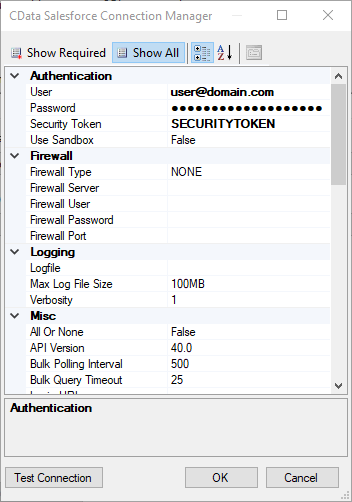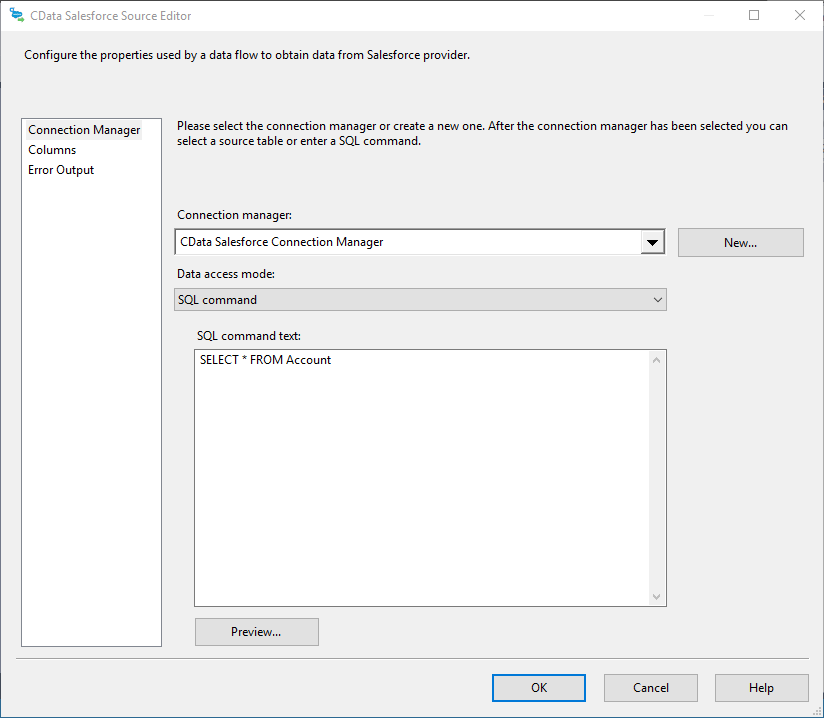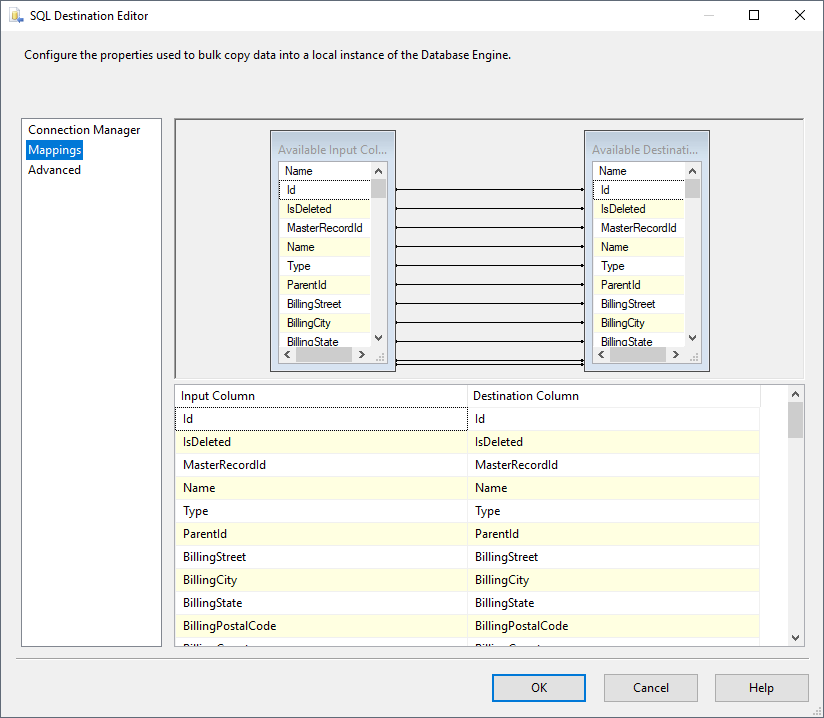Discover how a bimodal integration strategy can address the major data management challenges facing your organization today.
Get the Report →How to Import SAP Ariba Procurement Data into SQL Server using SSIS
Easily back up SAP Ariba Procurement data to SQL Server using the SSIS components for SAP Ariba Procurement.
Using SQL Server as a backup for critical business data provides an essential safety net against loss. Backing up data to SQL Server enables business users to more easily connect that data with features like reporting, analytics, and more.
This example demonstrates how to use the CData SSIS Tasks for SAP Ariba Procurement inside of a SQL Server SSIS workflow to transfer SAP Ariba Procurement data into a Microsoft SQL Server database.
Add the Components
To get started, add a new SAP Ariba Procurement source and SQL Server ADO.NET destination to a new data flow task.
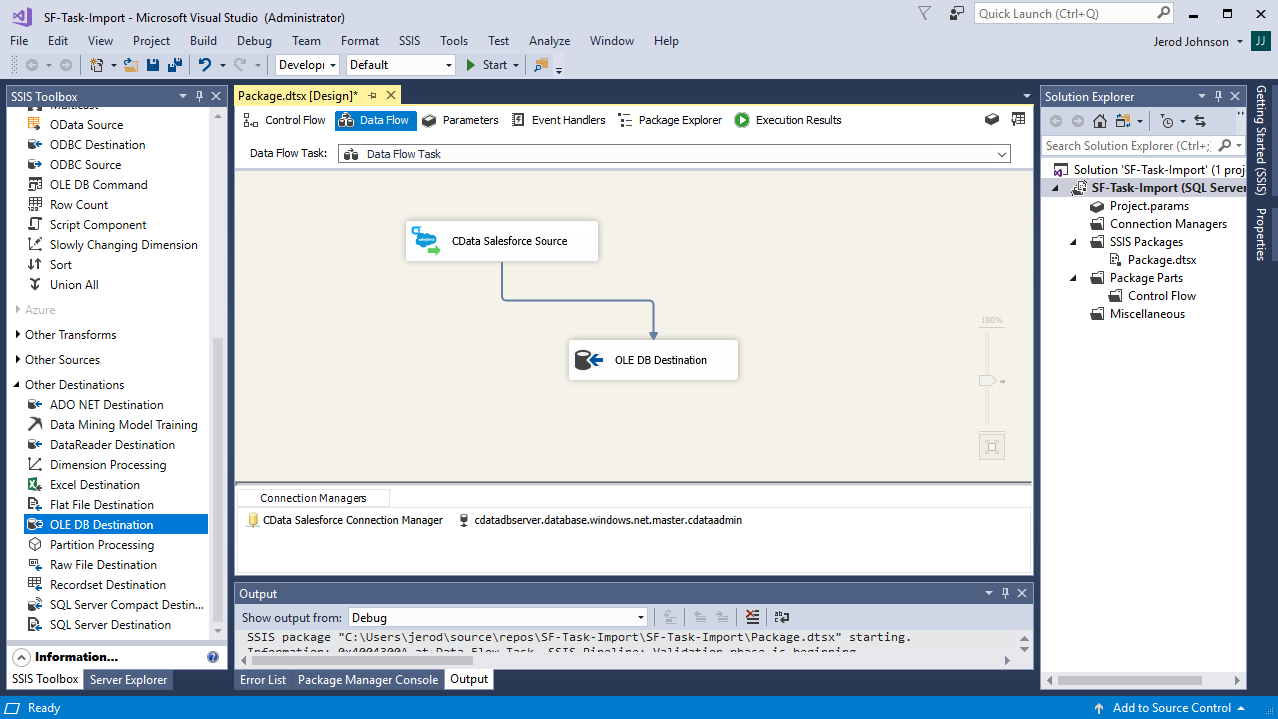
Create a New Connection Manager
Follow the steps below to save SAP Ariba Procurement connection properties in a connection manager.
- In the Connection Manager window, right-click and then click New Connection. The Add SSIS Connection Manager dialog is displayed.
- In the Connection Manager type menu, select SAPAribaProcurement. The CData SAP Ariba Procurement Connection Manager is displayed.
- Configure connection properties.
In order to connect with SAP Ariba Procurement, set the following:
- ANID: Your Ariba Network ID.
- ANID: Specify which API you would like the provider to retrieve SAP Ariba data from. Select the Buyer or Supplier API based on your business role (possible values are PurchaseOrdersBuyerAPIV1 or PurchaseOrdersSupplierAPIV1).
- Environment: Indicate whether you are connecting to a test or production environment (possible values are TEST or PRODUCTION).
Authenticating with OAuth
After setting connection properties, you need to configure OAuth connectivity to authenticate.
- Set AuthScheme to OAuthClient.
- Register an application with the service to obtain the APIKey, OAuthClientId and OAuthClientSecret.
For more information on creating an OAuth application, refer to the Help documentation.
Automatic OAuth
After setting the following, you are ready to connect:
-
APIKey: The Application key in your app settings.
OAuthClientId: The OAuth Client Id in your app settings.
OAuthClientSecret: The OAuth Secret in your app settings.
When you connect, the provider automatically completes the OAuth process:
- The provider obtains an access token from SAP Ariba and uses it to request data.
- The provider refreshes the access token automatically when it expires.
- The OAuth values are saved in memory relative to the location specified in OAuthSettingsLocation.
![Configuring a connection (Salesforce is shown).]()
Configure the SAP Ariba Procurement Source
Follow the steps below to specify the query to be used to extract SAP Ariba Procurement data.
- Double-click the SAP Ariba Procurement source to open the source component editor.
- In the Connection Manager menu, select the connection manager previously created.
- Specify the query to use for the data extraction. For example:
SELECT DocumentNumber, Revision FROM Orders WHERE OrderStatus = 'CHANGED'![The SQL query to retrieve records. (Salesforce is shown.)]()
- Close the SAP Ariba Procurement Source control and connect it to the ADO.NET Destination.
Configure the SQL Server Destination
Follow the steps below to specify the SQL server table to load the SAP Ariba Procurement data into.
- Open the ADO.NET Destination and add a New Connection. Enter your server and database information here.
- In the Data access mode menu, select "table or view".
- In the Table Or View menu, select the table or view to populate.
- Configure any properties you wish to on the Mappings screen.
![The mappings from the SSIS source component to SQL Server. (Salesforce is shown.)]()
Run the Project
You can now run the project. After the SSIS Task has finished executing, your database will be populated with SAP Ariba Procurement data.
